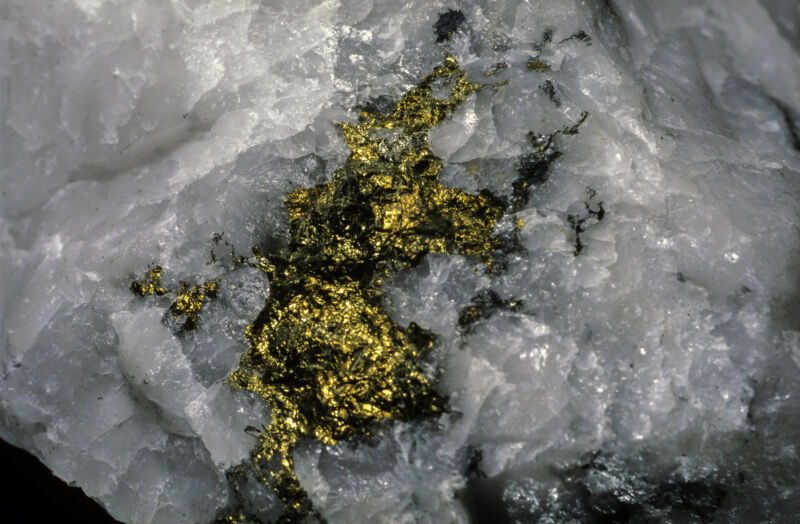Natural piezoelectric effect may build gold deposits

Enlarge / A lot of gold deposits are found embedded in quartz crystals. (credit: Pierre Longnus)
One of the reasons gold is so valuable is because it is highly unreactive—if you make something out of gold, it keeps its lustrous radiance. Even when you can react it with another material, it's also barely soluble, a combination that makes it difficult to purify away from other materials. Which is part of why a large majority of the gold we've obtained comes from deposits where it is present in large chunks, some of them reaching hundreds of kilograms.
Those of you paying careful attention to the previous paragraph may have noticed a problem here: If gold is so difficult to get into its pure form, how do natural processes create enormous chunks of it? On Monday, a group of Australian researchers published a hypothesis, and a bit of evidence supporting it. They propose that an earthquake-triggered piezoelectric effect essentially electroplates gold onto quartz crystals.
The hypothesis
Approximately 75 percent of the gold humanity has obtained has come from what are called orogenic gold deposits. Orogeny is a term for the tectonic processes that build mountains, and orogenic gold deposits form in the seams where two bodies of rock are moving past each other. These areas are often filled with hot hydrothermal fluids, and the heat can increase the solubility of gold from "barely there" to "extremely low," meaning generally less than a single milligram in a liter of water.